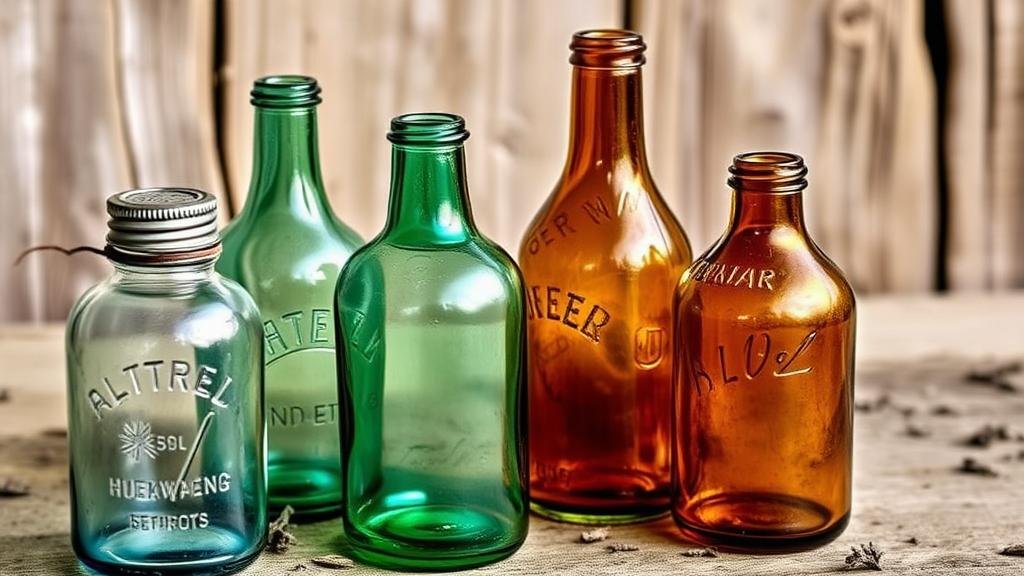Unearthing Antique Jars and Bottles in Remote Pioneer Homesteads
Unearthing Antique Jars and Bottles in Remote Pioneer Homesteads
The discovery of antique jars and bottles at remote pioneer homesteads offers a fascinating glimpse into the lives of early settlers and their daily practices. These artifacts not only serve as significant historical markers but also play a crucial role in understanding the socio-economic conditions of the past. This article delves into the methodology of unearthing such items, the historical context, and the implications of these findings.
The Historical Context of Pioneer Homesteads
Pioneer homesteads emerged primarily in the late 19th and early 20th centuries as part of settler colonial policies across North America. Homestead Act of 1862 allowed individuals to claim parcels of land, motivating many to migrate westward in search of new opportunities. As these settlers established their homes, they often relied on accessible materials and imports, which can shed light on their lifestyle and trade.
Antique jars and bottles from these homesteads tell stories of food preservation, medicinal practices, and even societal norms. For example, Ball jars, commonly used for canning, reflect an era when self-sufficiency was paramount. Similarly, certain glass bottles reveal information about the local economy and the influence of trade networks.
Searching for Artifacts: Tools and Techniques
The process of locating and excavating jars and bottles begins with thorough research and planning. Here are key steps involved:
- Site Selection: Identifying a prospective homestead involves examining historical maps, family records, and local archives to pinpoint former locations of settlements.
- Landowner Permission: Before embarking on any excavation, it is essential to secure permission from current landowners. Respecting property rights fosters goodwill and cooperation.
- Tools Required: Basic excavation tools include trowels, shovels, and brushes, along with safety gear such as gloves and goggles. For deeper excavation, a spade or a more advanced digging tool may be necessary.
Once at the site, the focus shifts towards systematic excavation. This should be performed thoughtfully to avoid damaging potential artifacts. An effective method is to create a grid layout to ensure that the area is thoroughly explored, allowing for controlled excavation and careful documentation.
Preservation Techniques for Unearthed Artifacts
Upon successfully discovering a jar or bottle, proper cleaning and preservation techniques are crucial to maintaining the integrity of the artifact. Here are recommended steps:
- Initial Cleaning: Use a soft brush and lukewarm water to remove dirt and debris from the surface without risking damage to the glass.
- Avoid Harsh Chemicals: Using chemical cleaners can erode historical value. Instead, rely on natural cleaning agents such as vinegar for mild cases of discoloration.
- Storage Conditions: Store artifacts in a stable environment away from direct sunlight, fluctuating temperatures, and high humidity, which could lead to deterioration.
Case Studies of Unearthed Artifacts
Case Study 1: The Johnson Homestead
Excavations at the Johnson Homestead in Nebraska yielded a collection of mason jars dating back to the early 1900s. The most notable find was a cobalt blue glass jar, which was typically used for preserving jams and jellies. This jar provided valuable insights into the familys dietary practices and their engagement in local agriculture. Historical records indicated that the Johnsons were among the first to cultivate cherries in the area, thus linking the content of the jar to local production.
Case Study 2: The Anderson Cabin
At the site of the Anderson Cabin in Wyoming, archaeologists uncovered several medicinal bottles that dated back to the late 1800s. The recovered artifacts included ointment jars and tincture bottles, showcasing the medical practices of the time. Analysis of these bottles revealed the use of specific herbs and compounds that were popular during the era, illustrating the self-sufficient healthcare approaches employed by the pioneers.
Implications of Discovering Antique Jars and Bottles
The unearthing of antique jars and bottles has significant implications for historical research and education. Each artifact stands as a tangible connection to the past, helping historians and archaeologists piece together the lifestyles and practices of early settlers. They inform us about geographical trade routes, local resources, and even cultural exchanges between different settler groups.
- Contributions to Local History: Discoveries heighten community interest in local history, fostering appreciation for heritage and cultural narratives.
- Educational Opportunities: Artifacts can serve as educational tools in museums and schools, allowing new generations to explore the implications of pioneer life.
Actionable Takeaways
For enthusiasts and researchers interested in unearthing antique jars and bottles:
- Conduct thorough research on potential excavation sites through historical maps and records.
- Secure necessary permissions and follow ethical excavation practices to respect property rights and historical significance.
- Adopt careful preservation techniques to ensure the longevity of discovered artifacts.
Engaging with the past through the lens of antique jars and bottles not only enriches our historical knowledge but also fosters a connection with the resilience and ingenuity of our pioneering ancestors.



